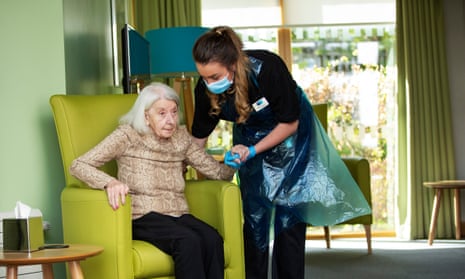When the world shut down in early 2020, many thought of hospitals, empty streets, and overworked nurses.
But behind the scenes, in quiet care homes across the UK, something devastating was unfolding—something many now call a national tragedy.
“Like Wildfire” — How the Virus Ravaged the Most Vulnerable
As the COVID-19 Inquiry entered its sixth module this week, the spotlight turned to care homes—a sector many believe was neglected when it mattered most.
Testimonies from staff and families described how the virus tore through facilities “like wildfire,” overwhelming unprepared teams and taking the lives of thousands of elderly residents.
One chilling term echoed throughout the hearings: generational slaughter.
That’s how policy advisor Alasdair Donaldson described the loss of life in care homes.
Speaking about his time in the Department of Health and Social Care during the early days of the pandemic, he described a government response in “complete chaos.”
He didn’t mince words, calling it perhaps the greatest Government policy failure of modern times.
Heartbreaking Goodbyes Through Glass and Screens
With strict restrictions in place, many families weren’t able to be with their loved ones in their final moments.
Some care home workers recounted the emotional trauma of helping residents say goodbye to family over Zoom calls.
One woman, identified only as Ann from North Wales, shared the pain of trying to comfort her father—who had dementia—through a window.
“He couldn’t understand why we were outside. He would just cry and cry,” she said through tears.
These stories weren’t rare.
Many families were forced into similar agonizing situations, watching their loved ones decline from behind glass or on glitchy video calls.
PPE Shortages and Midnight Discharges
Care home staff faced incredible pressure, dealing with frightening gaps in protective gear and erratic hospital discharges.
Some residents were sent back from hospitals in the middle of the night—untested, confused, and often infected.
The fear among staff and residents was palpable.
Many felt utterly abandoned.
Jacqueline Carey KC, counsel to the inquiry, underscored the dangers of these actions.
She questioned how patients could be transferred into care settings without being tested for the virus, especially when it was known that elderly people faced a much higher risk of death from COVID.
The Invisible Sector Left Behind
While hospitals got most of the attention, care workers and home-based carers often felt like an afterthought.
Dr. Jane Townson, head of the Homecare Association, criticized how disorganized the official guidance was.
“Before, during, and after the pandemic, home-based care was almost invisible in policy and debate,” she said.
She spoke of countless individuals isolated in their homes, unable to access essential care and watching their health decline in solitude.
Money Wasted and Lessons Yet to Be Learned
A 20-minute impact film shown during the session captured the pain and outrage of care workers, families, and experts alike.
The film highlighted how funds were “squandered on equipment and processes that failed,” while residents were stripped of the dignity of dying in the presence of loved ones.
The chair of the inquiry, Lady Heather Hallett, acknowledged the emotional weight of the testimonies.
She said this module would likely be particularly upsetting for many involved.
Tens of Thousands Lost, With Questions Still Unanswered
Between March 2020 and July 2022, more than 43,000 people in UK care homes died with COVID-19.
The inquiry continues to dig deep into how such a catastrophic outcome unfolded.
While previous parts of the inquiry looked at government decision-making, vaccine rollout, and procurement practices, this section has exposed the raw, human cost of those choices.
And with four more modules to go before the final report is expected in 2027, the full picture is still coming into focus.
Hancock to Testify as Inquiry Presses On
Former Health Secretary Matt Hancock is expected to testify on Wednesday.
Many will be listening closely, hoping for answers—and maybe even accountability.
With a projected cost of over £220 million, this inquiry is on track to become the most expensive in British history.
Whether it brings closure remains to be seen.
But for the families who lost so much, the truth can’t come soon enough.
